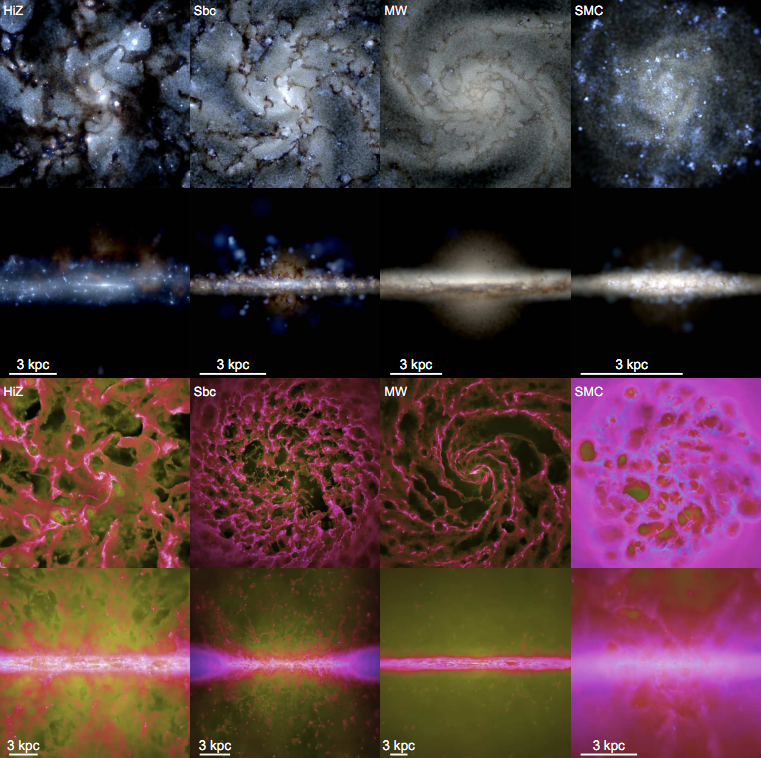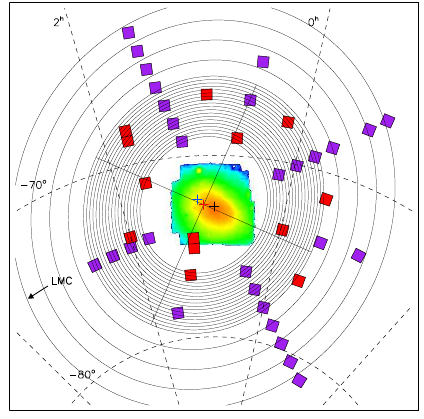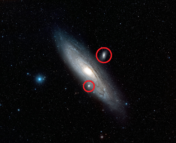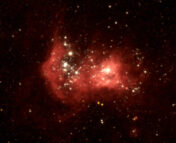Title: A Galactic Eclipse: The Small Magellanic Cloud is Forming Stars in Two, Superimposed Systems
Authors: Claire E. Murray, Sten Hasselquist, Joshua E. G. Peek, Christina Willecke Lindberg, Andres Almeida, Yumi Choi, Jessica E. M. Craig, Helga Denes, John M. Dickey, Enrico M. Di Teodoro, Christoph Federrath, Isabella A. Gerrard, Steven J. Gibson, Denis Leahy, Min-Young Lee, Callum Lynn, Yik Ki Ma, Antoine Marchal, N. M. McClure-Griffiths, David Nidever, Hiep Nguyen, Nickolas M. Pingel, Elizabeth Tarantino, Lucero Uscanga, Jacco Th. van Loon
First Author’s Institution: Space Telescope Science Institute, 3700 San Martin Drive, Baltimore, MD, 21218
Status: Accepted to ApJ
The Small Magellanic Cloud (SMC) is one of the most highly-studied galaxies in our Universe due to its close proximity (distance = 60 kpc), and because its structure and elements are so distinctly different from our own Milky Way galaxy. For example, the SMC is of lower metallicity and is therefore an excellent laboratory for understanding the physics of the interstellar medium (ISM) at lower metallicity conditions. The interstellar medium is the gas and dust between stars within a galaxy (as opposed to the circumgalactic medium which is the gas and dust between galaxies).
Despite its potential utility as a nearby parallel probe of galaxy evolution, the SMC’s structure still is relatively unknown. For example, stars with different ages appear to be distributed through the SMC differently. The oldest stellar populations appear to be distributed spherically without rotating, whereas younger stars are rotating. Furthermore, the structure of the SMC’s ISM indicates the SMC has potentially been severely disrupted by recent interactions with the Large Magellanic Cloud (LMC). Modeling the evolution and interaction history of the SMC from its conflicting observational constraints will help inform our understanding of the SMC’s future.
The authors combined observations of neutral HI gas emission and radial velocity (velocities along our line of sight) measurements to model the SMC’s evolutionary history. Because the ISM of the SMC is dominated by neutral HI emission (gas that has not been ionized by any astrophysical source like a star), observing this atomic gas allows us to trace the bulk properties of the SMC’s ISM. As shown in Figure 1, the radial velocities derived from the emission of the HI gas show two distinct structures moving away from us– one at a higher speed and one at a lower speed.

Although the HI emission can provide a window into the velocity structure of the SMC, it cannot probe the relative distances of sources. The authors instead use a map of extinction from dust to look at the relative spatial order of stars along the line of sight (i.e., in “front” or “behind” the dust). A star at a location with high extinction is behind more dust than a star at a location with low extinction. If you also assume the dust and stars are located in similar locations, then you can trace the actual locations of the stars. For example, a star behind a lot of dust is probably farther away from us (“behind”) than a star in front of the dust (“front”). To estimate the extinction towards each source, the authors use the Rayleigh Jeans Color Excess method, which assumes the amount of dust based on an observed color. A star with a redder color is assumed to suffer from higher extinction.
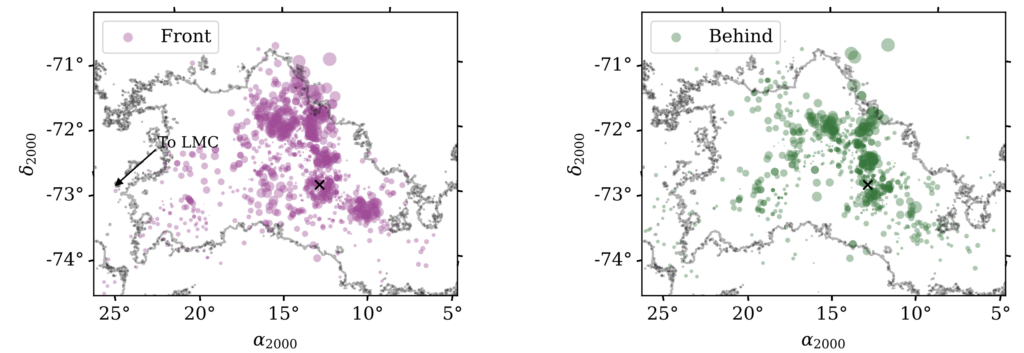
Figure 2 shows the final inferred maps of the “front” and “behind” structures of the SMC. Using metallicities derived from the APOGEE survey, the authors also determined that generally the stars in the front component are higher metallicity than the stars in the behind component.
In conclusion, these results indicate the SMC is clearly composed of two distinct star-forming systems. One possible explanation for these results is that these two systems are actually remnants of different unique galaxies, potentially indicated by the fact that they have different metallicities. Alternatively, the authors propose the “behind” structure is actually tidal debris from an interaction with the LMC. Ultimately, further observational constraints, such as direct distance measurements to the ISM components and simulations of the SMC’s evolution, will help paint a more detailed picture of the SMC’s history and future.
Astrobite edited by Jessie Thwaites
Featured image credit: ESO

